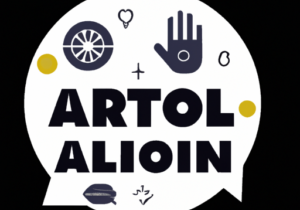The customer onboarding experience often seems to get overlooked.
Now it’s all about lead generation and top-of-the-funnel acquisition. However, the focus needs to shift to shed some light on activation and the onboarding process.
What Is the Customer Onboarding Process?
Essentially, the onboarding process consists of defining goals/expectations, customizing the experience, gathering data, and teaching the customers about your product to ensure that they have a seamless user experience.
When customers purchase your product, they still are going to need you to walk them through how to use it. If you don’t have an onboarding process set in place, customers won’t ever be aware of everything your product has to offer.
In a recent episode of Digital Conversations with Billy Bateman, Mark Colgan discussed both customer onboarding mistakes and best practices. He breaks down what the pitfalls are, how to avoid them, and how to stand out from the crowd.
Here are 4 proven strategies for a successful customer onboarding experience.
1. Set Expectations With the Customers
You should set expectations during the sales process.
You should explain to them then how your onboarding process works, who’s involved, what’s required from them, and what they expect from you as a business.

When expectations are set early on, the whole process runs much smoother.
2. Discuss How Success Will Be Measured
The customer purchased your product to alleviate a pain point, right? If they are not onboarded properly, they will never see the full potential your product has to truly resolve that pain point.

First, find out how your customer defines success and go from there.
Ask about what milestones they want to be seeing.
Work with them to establish a clear and precise definition of what success will look like for them with using your product/service. If this is not discussed, it causes a lot of misalignment.
3. Make the Handoff a Seamless Process
In the B2B space, when you acquire a new customer, there needs to be a seamless handoff from sales & marketing to the customer success team.
It’s important for sales & marketing to make that handoff a smooth transition for your company and for the customer because that is what will set the customer up for success.
Think about it like this, the customer has probably just been nurtured by the marketing team and then sales took over to close the deal. The communication can’t end there once they’ve purchased your product. There needs to be that handoff, not a drop off.
The customer should feel appreciated. Once they’ve had a poor onboarding experience, it’s nearly impossible to fully win back their trust.
So, the main issue with the handoff is that it’s not done smoothly. There needs to be good communication within your own teams and with the customer.

Pro Tip
Mark shared how he’s found the best practice is to have a meeting between the sales team and whoever they are handing the customer over to, whether that’s a customer success team, client delivery team, account manager, etc. In short, there just needs to be a meeting to officially hand over closed deals.
In this meeting, the sales team should pass over bits of information that the customer has shared with them. This will allow everyone to be aware about what’s important to the customer.
In other words, having a hand over meeting will ensure that the customer does not get lost in the process, or forgotten.
The sales team may feel like another meeting is a waste of time because they just want to get out and sell, but a smooth hand off is crucial to a great customer onboarding experience.
4. Establish and Maintain Good Communication With the Customer

Above all, keep the dialogue open between the customer and your teams.
We all know how it goes. The salesperson usually cuts off communication with the customer once the onboarding process starts.
Mark argues that there’s no harm in keeping that communication going. He suggests that the salesperson reaches out a few weeks into the onboarding process, just to check in.
Quick Recap
To wrap things up, let’s review the 4 keys to a successful customer onboarding experience:
- Set expectations from the start. The customer should know what they are getting themselves into. Explain to them how the customer onboarding process will work, even before the deal is closed.
- Come to a consensus on how success will be measured. You’re the expert on the product. You know how it will help the customer. Help them understand the potential of your product.
- Ensure a smooth hand off between the sales team and whichever team will handle the onboarding. This is essential because the customer should never feel lost in the process.
- Always maintain good communication with the customer. You want them to have a great onboarding experience, so reach out frequently to get feedback and make sure their expectations are being met.
Overall, the customer onboarding process is there to make lifelong customers.
The customer journey starts with awareness and needs to carry through to retention. A solid onboarding process achieves retention.
In conclusion, when they purchase your product, they still are not fully capable of using it to its full extent on their own. They need to be continually taught and guided on how to implement the product to lead them to greater success.
If you’re interested in finding out what a bot can do for your website, book a demo with us today!
READ MORE
Start seeing your Buyers' signals
Signals is helping companies automate, grow, and close sales pipeline with industry-leading predictive intent scoring, lead generation, and real-time engagement.






















